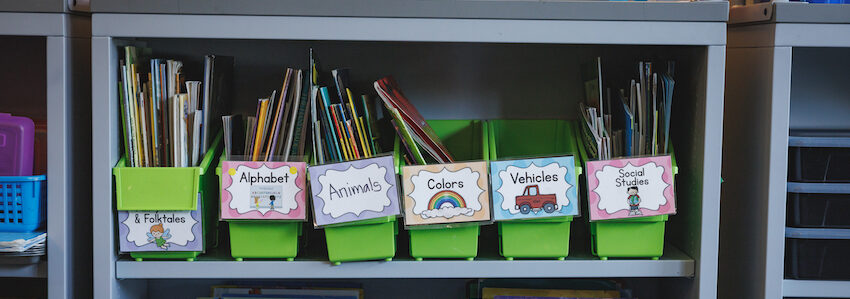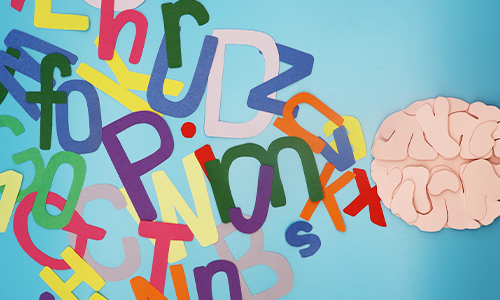
Many people have been talking about the need for phonics instruction, but most of these conversations come to a screeching halt after talking about instruction in basic decoding skills. Instruction in multisyllabic word reading, or teaching students to read words with more than one syllable, is a crucial bridge between basic phonics and fluent word reading. It is also a major stumbling block for older readers who are still working on foundational reading skills. How to practically teach students to read long words has also been largely left out of the national conversation on the science of reading.
Marissa Filderman and Jessica Toste, two university professors who research multisyllabic word reading interventions, joined us to discuss what we know about teaching students to read long words. Marissa is an assistant professor at the University of Alabama and researches literacy interventions for students with and at risk for learning disabilities, with an emphasis on data-based decision-making. Jessica is an associate professor at the University of Texas at Austin. She focuses on effective interventions for students with and at risk for reading disabilities, as well as how to intensify interventions through data-based instruction.
Misconceptions in multisyllabic reading
As Marissa and Jessica note, there are several misconceptions about multisyllabic reading and how to approach teaching young children how to read longer, more difficult words.
The first misconception is that instruction should center primarily on syllables. Marissa recommends not getting too hung up on syllable rules because many of them “are very rigid and they don’t always apply.” For example, teaching students to divide a word with a VCV pattern (like pilot or travel) before the first consonant and pronouncing the first vowel as a long vowel only works about half the time, according to research on the usefulness of syllable division patterns by Devin Kearns. “It can be more confusing for a reader who already has a lot of difficulty with just decoding in general to also think about those rules,” Marissa adds.
“There’s also often a misconception that foundational reading instruction and knowledge of grapheme–phoneme correspondence and decoding skills translate automatically into multisyllabic word reading,” Jessica says. But a young reader having a good grasp of the alphabet and the sounds each letter makes isn’t enough.
Foundational reading skills, including phonics and word recognition, are critical but they are not enough on their own. Jessica explains that kids need to be helped in taking decoding to the next level: “Students really need to be taught, and students who struggle especially need to be taught—explicitly—how those skills scale up. They’ve been effective for them before. Now how can they use those skills to move from identifying and pronouncing individual letter sounds to identifying and pronouncing word parts to read more complex words? Students need this continued instruction as the words they are being exposed to become more complex and don’t always follow the rules they’ve been practicing in previous instruction.”
Another misconception is that foundational skills never need revisiting. That may be true for some students, but definitely not all. “There’s a careful balance we have to find with ongoing foundational skills instruction,” Jessica explains. For some students, “we need to continue to review vowel patterns and practice flexing vowel sounds while supporting students in decoding multisyllabic words. They need continued practice with those grapheme–phoneme correspondences so that they can apply them fluently and automatically every time they’re reading a word.”
Finally, there is sometimes confusion about the role of reading longer texts, as opposed to reading multisyllabic words in isolation. “It’s important to always read connected text in reading instruction, to always move from isolated word reading to connected text, even if you only have time for a few sentences to read at the end of a lesson,” Jessica advises.
6 ways to help kids with multisyllabic word reading
The following six strategies can help you approach multisyllabic word reading with your students:
- Ensure students have prerequisite skills. The first step in approaching multisyllabic words with your students is to confirm they’re ready for the added level of complexity. “Make sure students have prerequisite skills, that they know vowel sounds and consonant sounds, and that they can recognize most grapheme correspondences,” Marissa says.
- Focus on affixes. Marissa recommends explicitly teaching the pronunciation and meaning of affixes. “And continue to review all the affixes you’ve taught regularly,” she adds. Teaching students to quickly identify and “peel off” prefixes and suffixes within words can help students begin to recognize both pronunciation and meaning of larger chunks as they encounter more unfamiliar words.
- Practice chunking. Because syllable rules can be inconsistent and confusing, Marissa recommends chunking, either by using the vowel in a word or the morpheme. “Students might use the short or the long form of that vowel sound to read the word,” Marissa says. Teachers can also help students chunk by using morphemes and affixes. “One of the most important things when focusing on multisyllabic words is really building morphological knowledge through breaking words into meaningful parts to make them easier to read,” Marissa explains. The “peel off” strategy is useful when chunking, too.
- Make a game of reading multisyllabic words. It’s easy for multisyllabic reading instruction to get a little dry, so Marissa recommends getting playful. “After having structured practice with assembling and blending word parts to read multisyllabic words, I like to gamify this,” she says. “Students can play with the words in a sort of game format that’s fun, fast paced, and engaging. […] Introduce a select number of base words you think might work in your particular instructional context. Have students attach or build onto those base words with prefixes or suffixes. Have them point and say each word part and then blend the word parts and say the whole word.”
- Move on to fluency when kids are ready. “For word reading fluency practice,” Marissa advises, “I like to use targeted word lists until students get really comfortable. I recommend you focus on certain patterns that you want to work with in those word lists, or certain affixes. Your word list can become more complex as you go.” Some of that playful approach she mentioned earlier can work well with fluency, too. “There can be a timed component of this practice as well, if that’s helpful to students. Or you can have a tracking component where they track their own performance every time they read a word list and see if their fluency is improving over time.”
- Practice words in context. Just as Jessica noted, students need time to practice reading more than just isolated words. “Just like with any foundational skills instruction lesson, we always move from reading practice with words in isolation to words in connected text, and doing a lot of practice with connected text,” Marissa says. “This can look like sentences where the affixes you’re learning appear and multisyllabic words that you’ve been practicing move into passages as well.”
Serving students well
The crucial bridge for students from basic phonics to fluent word reading often goes overlooked. Consider reaching out to your leaders for any additional support you might need for your students. I recommend the following:
- Ensure your school has materials to help students read long words. The lessons Jessica uses in her research are available for free online, and they have been shown to be effective for older students who need more instruction in advanced word reading.
- Request professional learning opportunities around advanced word reading, and job-embedded coaching to answer ongoing questions and help you strengthen your practice. NWEA offers a professional learning workshop titled “Grades K–5: Building Fluent Readers” that’s a great place to start.
- Explore assessment options. If older students are not meeting benchmarks on your school’s reading comprehension assessment, consider using a follow-up assessment, like MAP® Reading Fluency™, that can help you better understand if students are struggling with word recognition or language comprehension. If students are having difficulty with word recognition in the upper grades, make sure their intervention addresses this in a systematic way.
Reading long words fluently opens the doors to a limitless world of learning opportunities through rich and complex texts for students. To hear more from Marissa and Jessica, watch our videos.



